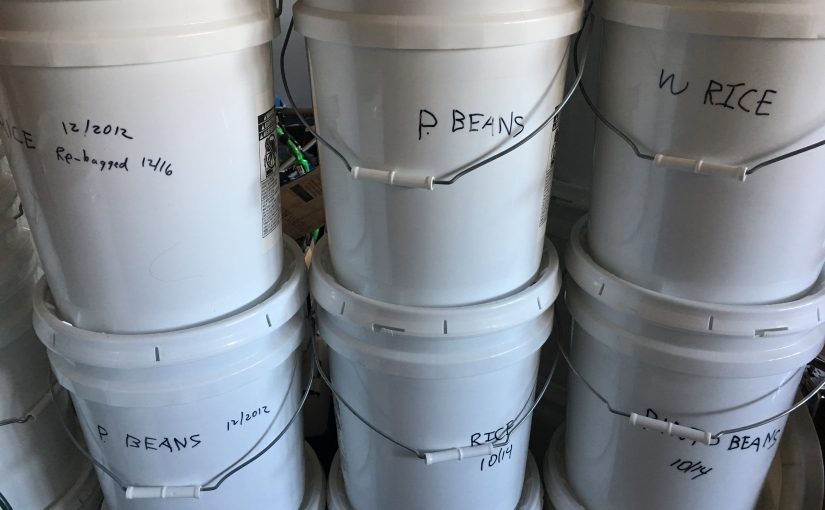Some folks initially getting into prepping are so eager to build their food storage quickly, they’re tempted to go out and buy a bunch of expensive freeze dried food, or a pallet full of beans and rice, sock it away, and forget about it. That’s fine, and it’s certainly better than having no food storage put away at all. However, there are some downsides.
- Expense – while beans and rice are cheap, if you go the freeze dried route, you are paying a hefty price for the convenience compared to similar food that can be stored in a different more cost effective manner. Buying a huge amount right away also potentially means you’ll be missing out on sales you could take advantage of to stock up at much increased savings.
- Nutrition – much of the commercially available food is not the best quality from a content point of view. It often times is potentially GMO in origin, and could have lots of extra ingredients like salt and preservatives. Storing lots of rice means you’ll have plenty of carbohydrates, but you’ll also want protein and fats to have a balanced diet.
- Taste – if you never eat the food you have socked away, you may be storing things that you don’t even want to eat. In a SHTF scenario, sure, having any food is better than having nothing. But in an already stressful situation, you’ll have extra comfort knowing you have food to fall back on that you actually enjoy eating.
- Rotation – if you’re not eating out of your food storage, that means either you’re not rotating it or you are throwing things out. Granted, if you go the freeze dried route, spoilage isn’t a big concern until 20+ years down the road. However just because something is technically still edible does not mean its nutrition is optimal.
Cook With Your Food Storage
The best way to know that you are hitting the mark on all the points above is to actually cook with the food you are storing. You’ll know whether you enjoy eating what you’ve stored, and if you don’t, you’ll know not to continue storing that item.
As you cook with your stored food, you’ll also develop the best ways to prepare the food in a way that you enjoy. It’s great to have plenty of beans and rice, but consider eating that 10th meal of it in a row. While it will keep you alive & going, it’s not going to be pleasant after that long. This is where it’s important to plan various ways to dress it up to get some variety of tastes in your diet. That could mean storing up spices like salt, pepper, chili powder, and cumin. Another idea is storing some dehydrated veggies like carrots, celery, and mushrooms along with a powdered chicken bullion flavoring that would let you make a soup or sauce to go with the rice, and add some extra vitamins & minerals to your meals.
Get creative and experiment! Keep a recipe book of your favorite meals build using your food storage. We’ll be introducing some software later this year that will aid in that regard, and let you find & share your favorite concoctions with other preppers easily.
When you’re cooking with your food storage items, it’s also a good idea to occasionally try preparing your meals with your emergency cooking source. It’s not something you need to do every day, but one of those less busy weekend days consider taking out your Sun Oven (yes, even in winter) or Rocket Stove, use water filtered through the Berkey, and cook your from your storage using those tools. This not only uses your food storage, but keeps you familiar with using your tools.
There is an old prepper adage with regard to food storage that is very important to keep in mind:
Eat what you store, store what you eat.
It’s important in this new year to keep that in mind, especially the first part where many of us fall short. We’re good at putting food back, but often times we forget about it – reach for something quick & easy from the fridge – and don’t actually pull it out and use it.
So make a commitment to cook with your food storage regularly this year – and don’t forget to rotate!



